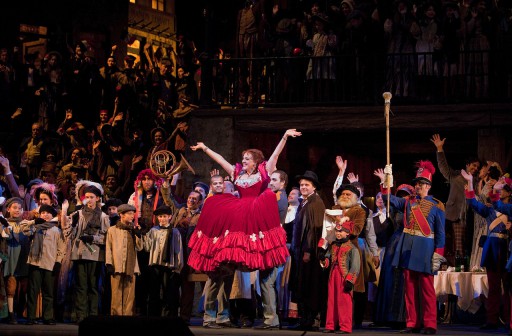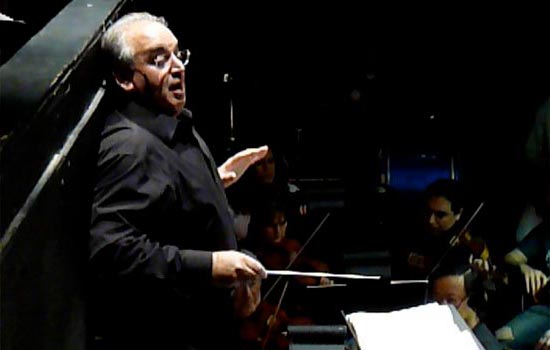By Michael Recchiuti
It is a time of reckoning. Issues concerning the abuse of power in matters of politics, race, and sex have been brought to a superheated boil in this pressure cooker that is life in the time of Covid. A hard look must be taken at so many of our institutions, and how they function. The issue I would like to address here is that of the intersection of the business of music and power, and how I think we must view it. We live in a society with structural inequalities. Every society has structural inequalities. Our goal in America has been to progressively reduce, mitigate, and eliminate them. Every issue reduces itself to the question of power: who possesses and wields it, and to what ends is it employed? In the contemporary opera world, this is a complicated question that must be addressed in several contexts. There is no one “Opera”. Every city has its own institutions, audience, and likewise any country. Norms in Germany are not norms in Italy. Norms in New York City are not norms and tastes in Des Moines or Denver. There is no “system” in opera. Every company in America is sui generis in its audience, construction, and more importantly, funding. The breakdown of the European systems, especially since the economic contraction of 2008 has increasingly driven the national systems there in this direction also.
For now, I would like to focus on the USA. With the historical lack of any government support for the performing arts, every single artistic institution in this country has been founded and supported by passionate individuals who were willing to pay for them privately. The advent of the federal income tax with its tax-deductible, non-profit mechanism made supporting these institutions more attractive to more individuals and corporations, but be sure, we are still talking about a minuscule percentage of the population paying for them. Every entity has a Board of Directors, ultimately responsible for engaging directors and paying the bills. They engage a General Director who must act as impresario, CEO of the organization, and now more than ever, fund raiser. Below the General Director is a flow chart similar to any company, with the vital addition of a fundraising arm, as no company exists either on their box office receipts or the donations of the Board members. As you can see, the power is concentrated on the General (and/ or Artistic) Director to choose the repertory, create or rent productions, choose singers, etc. An opera company takes in between 30 and 40 percent of its operating budget from its box office. We will call this “earned income”. The other 60 to 70 percent must be found: individual gifts, corporate contributions, and foundation grants. This means that every night the curtain goes up on a sold-out full house, factoring in operating expenses, the company loses about 70 percent of its cost for that show. This is a daunting reality. It is the primary responsibility of the GD to make the curtain go up—this means that today the primary responsibility of the GD is to find that other 70 percent. This job has gotten increasingly more difficult as the audience ages out, the patron base dies, and the level of popular culture appreciation has plummeted. The smaller American companies have seen their seasons shrink from five or six titles with four or five repeats of each, down to three or four titles with pairs of performances. So, companies have constricted their entire seasons to a “festival” format, dispensing a handful of performances over a two-week period. This is a critical paradigm shift.
In the European operatic tradition, the Impresario was given the money—by either a group of patrons, or now, by the state, and his responsibility was artistic and administrative. In America, finding money is the first job. Producing and casting the operas is secondary. No money—no show. In the previous model an impresario needed to be a man of the theater. He needed an encyclopedic knowledge of repertory, voices, production techniques, business practices, and, most importantly—what made a good show—that is, a show that would be popular, and sell out. He was almost always a conductor, composer, or singer of vast experience. There has arisen now a culture of Opera Administrators. They take courses on opera administration, fundraising, and “diversity programming”. They join opera service organizations. In those organizations, they make powerful political friends who can network them into progressively larger positions. What they do not do is become working, professional artists, who must apply themselves to acquire complex and difficult skill sets in order to accumulate a body of work and experience at a high artistic level. There is not one trained musician leading any of the Big Three American opera companies (Met, Chicago Lyric, San Francisco). This is just the list of major companies. The lower-tier companies mostly follow suit. With this concentration of power, there is a commensurate concentration of responsibility. What goes on stage is the responsibility of the GD. Who sings what, and who conducts what, and whatever the productions look like is ultimately his/her responsibility. The activities of the Young Artist Training programs are their responsibilities. The establishment and maintenance of a safe and secure working environment is their responsibility.
The dam has burst, and there has finally been a flood of charges of sexual impropriety and the abuse of power and position all over the opera world. I have been in this world for over forty years, and I have seen it in action. There are big names involved. Many of the situations involved the alleged abuse of young singers in training programs in major companies. These situations manifest the worst possible violations of trust and responsibilities on the part of the major artists involved, and directors of these same companies. We have seen the offending artists fired, denounced, and occasionally charged, but we have yet to see anyone hold the directors of the companies in which these situations occurred made to answer. It is beyond credulity to think that these situations took place over the protracted periods in which they are alleged to have occurred, and not one general or artistic director knew about them.
My black colleagues have begun to register their feelings of being overlooked, and underrepresented. While I do think this is a reality in some places, I think it is important to be specific, and not deal in broad generalities in the varied landscape that I have described. We then get to the question of politics. Many directors will favor artists from specific managers’ rosters. Often the seasons are filled with artists who are, coincidentally, on the same management roster as the GD, or the company’s Music Director. At this point, business is business. It is not only black singers and artists who are overlooked; I would contend by merely listening and watching what goes on their stages, that most directors are not capable, or culturally prepared to recognize outstanding and appropriate artists of any race, and they have clearly demonstrated themselves incapable of maintaining safe and healthy working environments. The proof has been laid out before us. Until the imposition of high artistic standards applied by management qualified to recognize them is the sole criterion for the privilege of being permitted to perform before the public in this most demanding art form, we should not reasonably expect any improvement.

Photo: Cory Weaver/Metropolitan Opera







